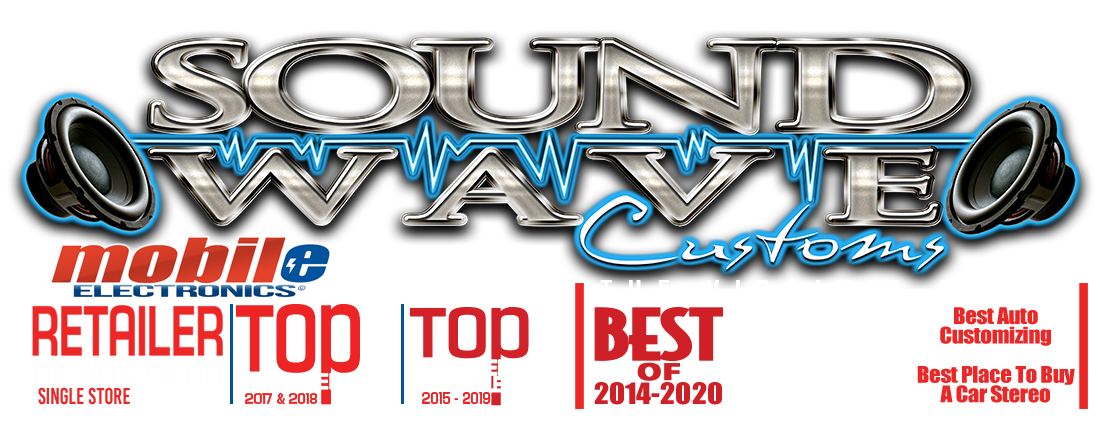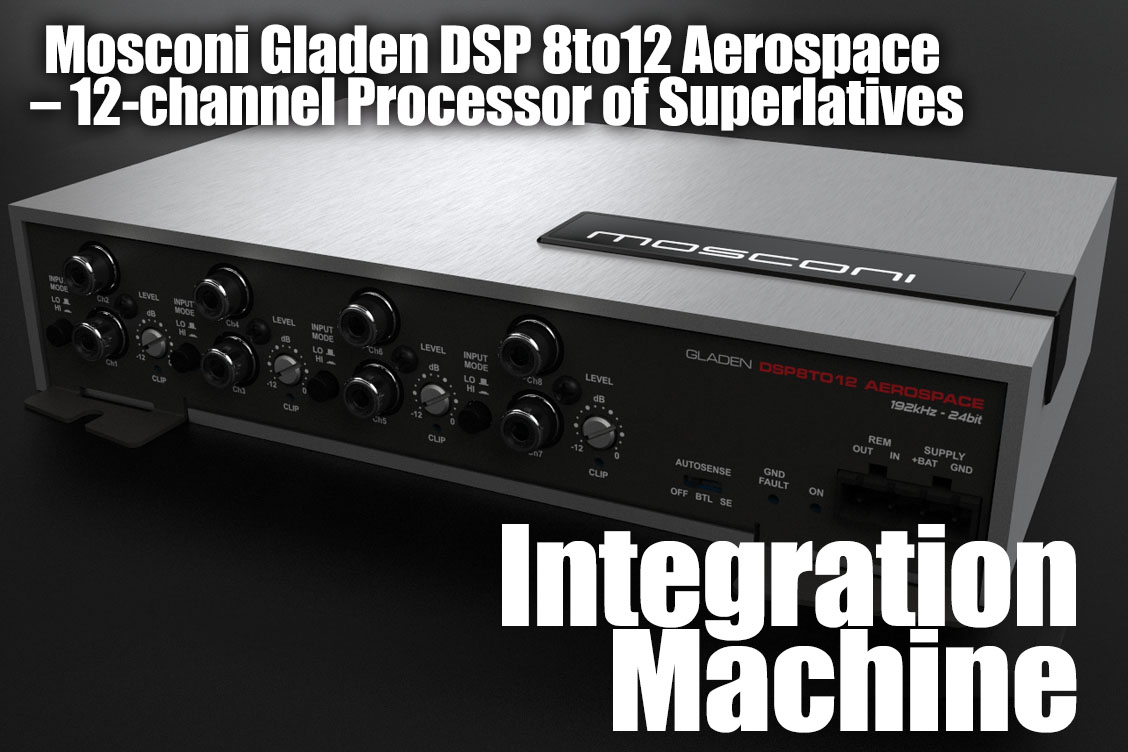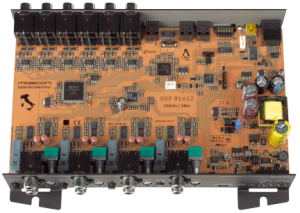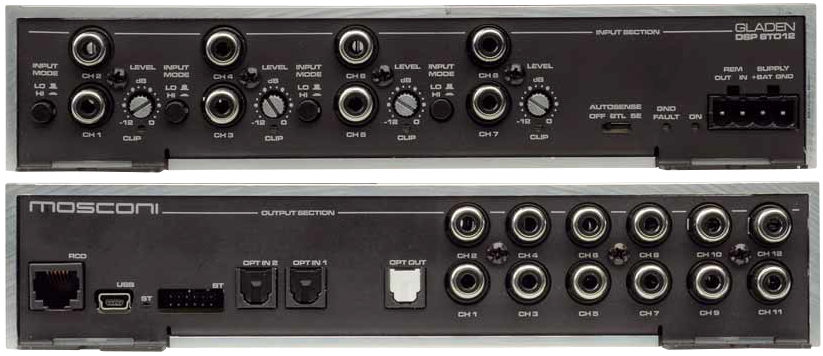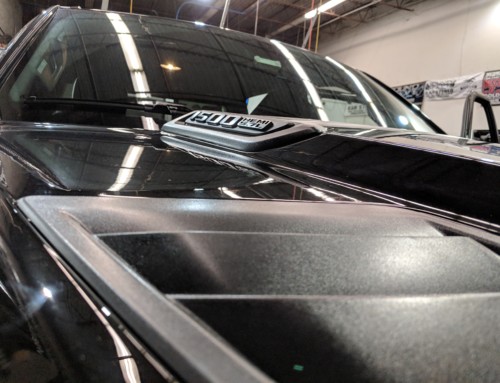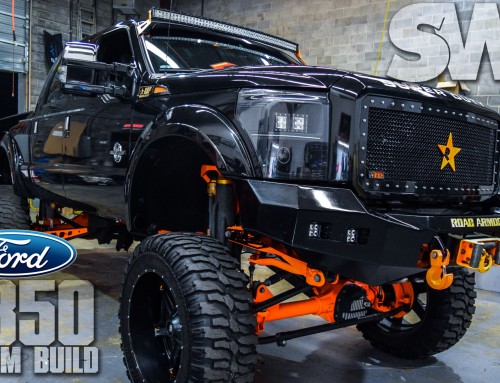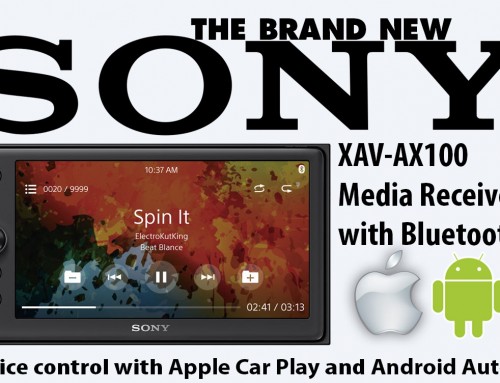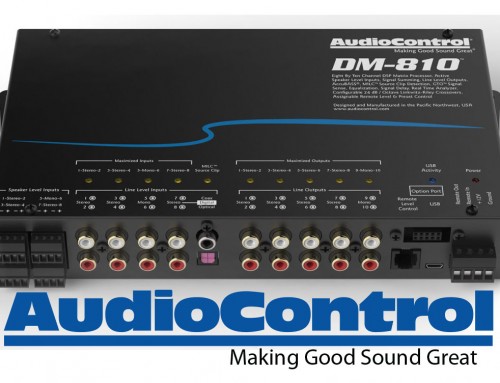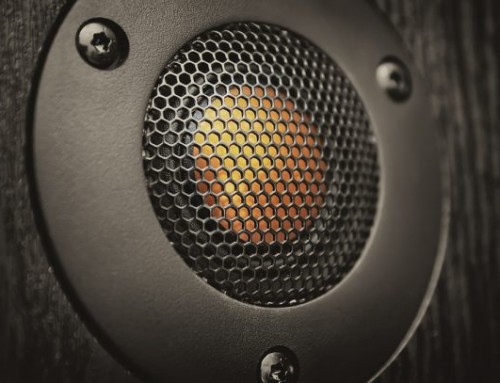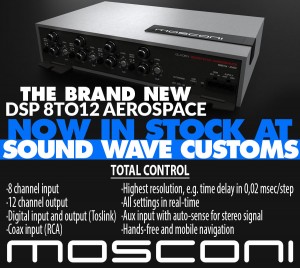 Mosconi has been a solid parameter on the market for many years now, especially since they launched the DSP 6to8, which is also integrated into several of Mosconi’s DSP power amps. Now the next generation DSPs are lining up, based on a completely new platform.
Mosconi has been a solid parameter on the market for many years now, especially since they launched the DSP 6to8, which is also integrated into several of Mosconi’s DSP power amps. Now the next generation DSPs are lining up, based on a completely new platform.
The new star in Mosconi’s product portfolio is the Gladen DSP 8to12 Aerospace. The name already reveals the DSP’s 8 input and 12 output channels, and the addendum “Aerospace” has been borrowed from Mosconi’s sister brand Gladen, where it marks the absolute top range. When comparing the 8to12 with the four-year-old 6to8, it becomes immediately obvious that the 8to12 is much more than just a 6to8 with a few added channels.
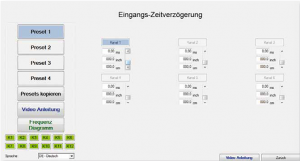
The 8to12 adds input time delay in addition to the usual output delay in order to handle factory sound systems that come already with time alignment
Of course the Mosconi front plate is still simple and angular, but the glimpse on the interior makes us feel all excited: Everything has been arranged meticulously and orderly; the overall layout is almost lavish – surely everything could have been packed a bit more compact. The DSP chip employed is the Analog Devices 1452, which we saw in several of the best designs on the market already. It’s the weapon of choice and very well positioned, bringing along a 32-bit, 295 MHz fixed point processor. The same is true for the D/A converter ADAU1962 from Analog Devices. The third party is small bug from Cirrus, the 5368, which is responsible for the initial A/D conversion.
The DSP 8to12 obviously is state-of-the-art, and it’s the only sound processor that works with 192 kHz/24 bit resolution internally throughout all stages. This would theoretically make it possible to let the 8to12 realize a frequency range of 96 kHz, but the engineers decided that a bandwidth of almost 60 kHz is more than enough, still marking the car audio market’s top position. The ADAU1452 processes the data with 64 Bit, which requires a lot of processing power, while the DSP chip ‘only’ has to deal with 12 channels, despite being designed for working with up to 48 channels. This leaves enough headroom to give the available 12 channels the full feature set.
In general, the available processing power must be divided among the channels that are used: Either the DSP chip deals with a lot of channels, or offers a multitude of features – or it uses its skills for deeper, more thorough computation. The latter benefits the sound quality, as the motto is indeed ‘the more, the better’. A bigger word width (bits) increases the exactness of the calculations, a higher frequency range (kHz) help to keep the inevitable low-pass fi lters of the digital signal processing at a distance. And clocking the processor with many MHz helps to realize the wanted or needed amount of channels and filters.
The 8to12’s core components thus are absolute state-of-the-art, but what matters even more for both the measurements and the sound quality of a DSP are the layout and the analog components – which brings us to the goodies that in turn lead us to the Aerospace topic. As already mentioned, this is about High End: Surely Mosconi could have built this DSP a bit simpler while maintaining the same functionalities. However, the Aerospace badge demands for nothing less than the best, and that’s why the developers were allowed to run free without fuss or quibble. The 8to12 therefore not only puts forward the above mentioned high-quality parts such as the converters but also treats like the extra low-noise op-amp that serves only the perfect driving of the actual output stage. All the very best – unfortunately at a price, but that’s understandable.
Software
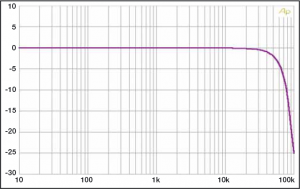
The frequency response of the 8to12 extends to 57 kHz – thanks to the 192 kHz sampling rate, up to 96 kHz would be possible
First off: Our review sample had not been equipped with the final version of the software, so we had to do without some useful features for everyday use. When the 8to12 comes to the dealers, it will of course offer the full range of features as it’s described hereafter. The highlight comes immediately as the first item in the workflow, the input mixer. The 6to8 already had a very flexible mixer, but the new model of course has notched up the performance. The outstanding feature are the now four AUX inputs ‘Auto-Fade 1-4’ that permanently check for an incoming signal and that are switched into the running music program of the main source (radio unit) in a prioritized, ascending way. The fade-in can be adjusted in signal sensitivity and with a ‘hard’ or ‘soft’ characteristic, and for the fade-out, there’s also an adjustable ‘Backfade Delay’. The signal sources that are assigned to the AUX inputs can be freely selected. For example, the user can cross-fade four sources like GPS, hands-free devices or MP3 players, etc., in a fixed hierarchy, according to where a signal has been detected. That applies to the three digital inputs as well. Two of them are optical; one is Bluetooth (with the optional MOS_BT). This works all the same: All three sources are being constantly scanned, and the one that delivers a signal is automatically routed to the outputs. In this way, the 8to12 offers the possibility to automatically loop in seven analog and digital sources – that is impressive. What’s new is the dynamic sound setup.
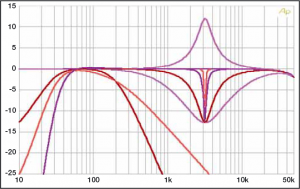
Each of the 8to12’s channels has 10 freely confi gurable fi lters. With the 6 dB and 12 dB high/low pass fi lter components, slopes of up to 120 dB are possible
Now you can not only assign dedicated mixers to each AUX/Autofade setup, but also several different presets for the main EQ, crossovers and time delay. You can store four different sound presets, and assign one of them to , for example, the hands-free device or any other external source, giving it its own EQ, fi lter, etc. setup. This can be cunningly configured to form a kind of limiter; by defining the main inputs additionally as AUX/Autofade inputs, they get priority (as mentioned), as the always receive a signal when listening to music. Now the trick is to set up the sensitivity for crossfading to AUX/ Autofade so high that the cross-fade only happens at higher volumes. The ‘louder’ setup then gets, for example, a higher crossover frequency and a lowered high frequency range or a subsonic fi lter. All this can be extended to all four AUX/Autofade sources – no boundaries for your creativity!
EQ & Co
On to the EQ, which (like the mixer) is not separated into channel pairs but into the domains front, rear and channels 11/12. The channels 1-6 are for the front, 9 and 10 serve the rear. The channels 7 and 8 can be freely assigned to either domain. For the channels 11 and 12 the user can choose between Sub, Center, and free. The remote control’s fader and sub-level functions then also control the respective channels. The EQ itself reveals a virtual graphic de
sign but is fully parametric, with 30 bands per domain. Gone are the times of limited features; the DSP chip has more than enough processing power for everything. Crossovers and filters also have been revamped quite a bit: Now there are ten fi lter components per channel instead of the 6to8‘s five. If needed, you can build filters up to 10 x 12 = 120 dB/octave slope, or maybe a 2 x 60 dB/octave bandpass filter. New filters besides the high-pass, low-pass, notch and shelf filters are two types of all pass filters, with which the phase can be shifted, and an additional EQ that allows the user to set up dedicated EQs for every driver. In the time delay menu, the step width now comes to super accurate 0.005 ms/1.75 mm, thanks to the 192 kHz sampling rate. Furthermore, there’s a second set of time shifts in the input delay. They can undo possible factory-set time delay corrections.
Conclusion
The Mosconi Gladen DSP 8to12 Aerospace is a mighty machine that belongs to the absolute top segment of the market in terms of hardware feature. Its software makes it incredibly fl exible and easy to integrate. The source management and the mixer functions are overwhelming – the DSP 8to12 is a magnificent overall package!
Elmar Michels

Each channel pair offers its own high/low switch and a gain controller. The extensive digital connections include optical and Bluetooth S/PIDF
Features
8 channel input
12 channel output
Digital input and output (Toslink)
Coax input (RCA)
Highest resolution, e.g. time delay in 0,02 msec/step
All settings in real-time
USB and optional BT adapter (MOS-BTM), for adjusting by PC, Android and BlackBerry (*) smart phone apps
Low-Level or High-Level input with auto-sense (only by High-Level)
Aux input with auto-sense for stereo signal
Hands-free and mobile navigation
4 presets
Mixer matrix to realize all possible mixtures and couple input and output channels as desired
Intuitive User Interface and video tutorials to avoid an instruction book.
Operating also without mouse, only with keys for an easy adjusting in the car
DSP Technology made by cooperation MOSCONI-GLADEN
Technical Specifications:
- INPUT MODE: Low Level (LL) / High Level (HL)
- INPUT IMPEDANCE: > 12KOhm (LL) / 47Ohm (HL)
- INPUT SENSITIVITY: 1.2Vrms ÷ 8Vrms (LL) / 3Vrms ÷ 20Vrms (HL)
- INPUT VOLTAGE REGULATION: -16.5dB ÷ 0dB
- MAX OUTPUT SIGNAL: 8Vrms
- OUTPUT IMPEDANCE: 600 Ohm
- THD DISTORTION: <0.003% @ 4Vrms
- FREQUENCY RESPONSE: 10Hz ÷ 63KHz (within -0.1dB)
- CHANNEL SEPARATION: >90dB (@ 1KHz)
- SUPPLY VOLTAGE: 11V ÷ 15V
- CURRENT CONSUMPTION: 0.9A @ 12V
- AUTOSENSE: OFF / BTL / SE
- REMOTE OUTPUT: 100mA max.
- COMMUNICATION PERIPHERALS: USB,RCD/RC-MINI (optional), MOS-BTM (optional)
- SIZE: 200 x 125 x 40 mm (including fixing feet)
